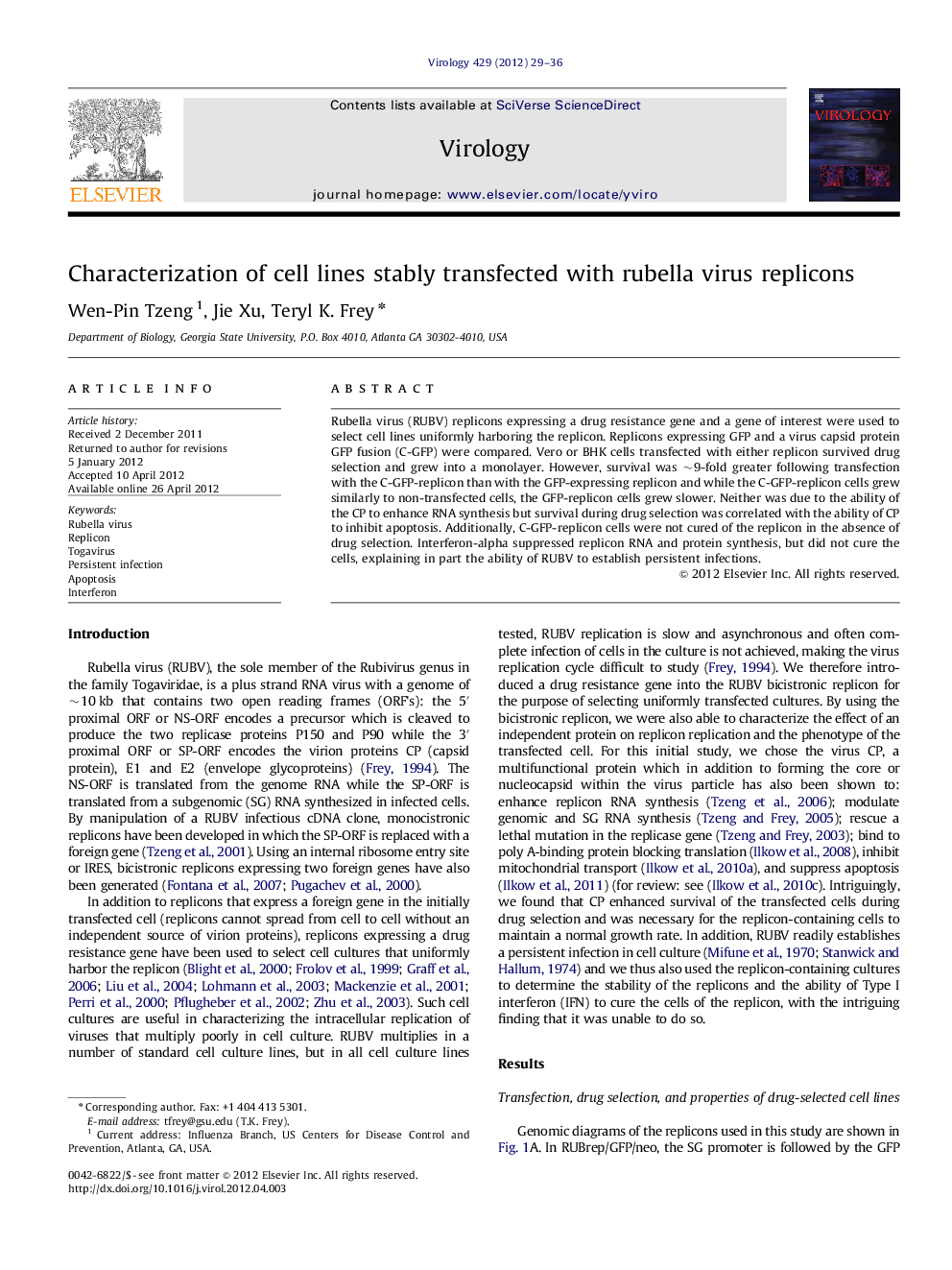| Article ID | Journal | Published Year | Pages | File Type |
|---|---|---|---|---|
| 3424295 | Virology | 2012 | 8 Pages |
Rubella virus (RUBV) replicons expressing a drug resistance gene and a gene of interest were used to select cell lines uniformly harboring the replicon. Replicons expressing GFP and a virus capsid protein GFP fusion (C-GFP) were compared. Vero or BHK cells transfected with either replicon survived drug selection and grew into a monolayer. However, survival was ∼9-fold greater following transfection with the C-GFP-replicon than with the GFP-expressing replicon and while the C-GFP-replicon cells grew similarly to non-transfected cells, the GFP-replicon cells grew slower. Neither was due to the ability of the CP to enhance RNA synthesis but survival during drug selection was correlated with the ability of CP to inhibit apoptosis. Additionally, C-GFP-replicon cells were not cured of the replicon in the absence of drug selection. Interferon-alpha suppressed replicon RNA and protein synthesis, but did not cure the cells, explaining in part the ability of RUBV to establish persistent infections.
